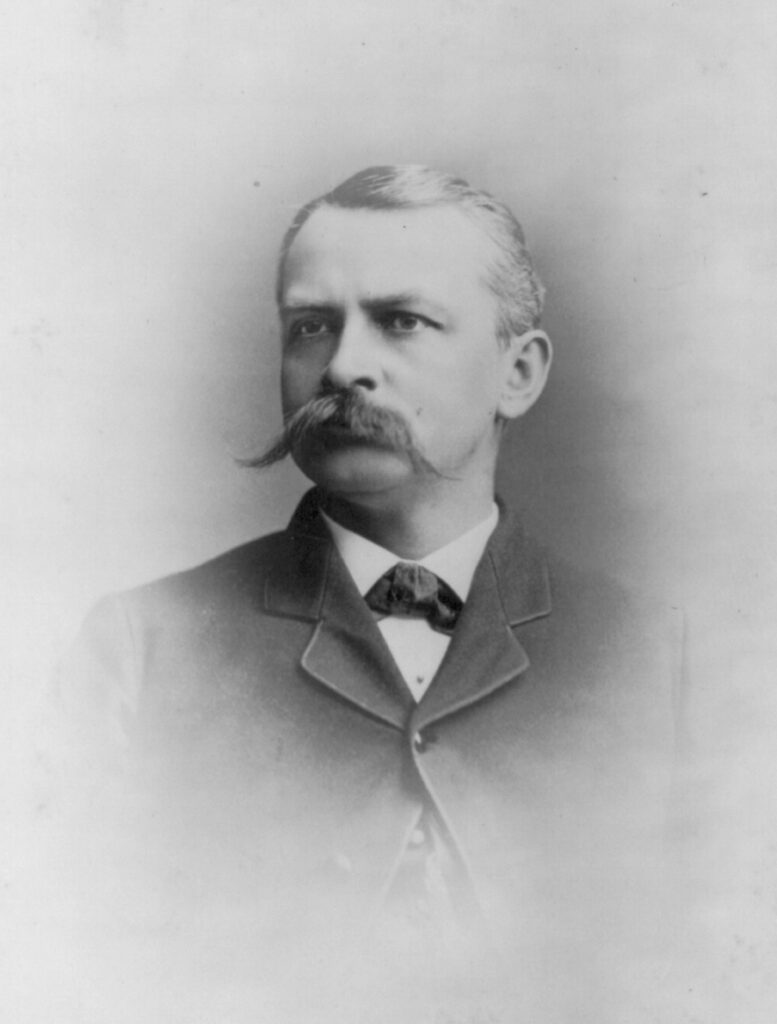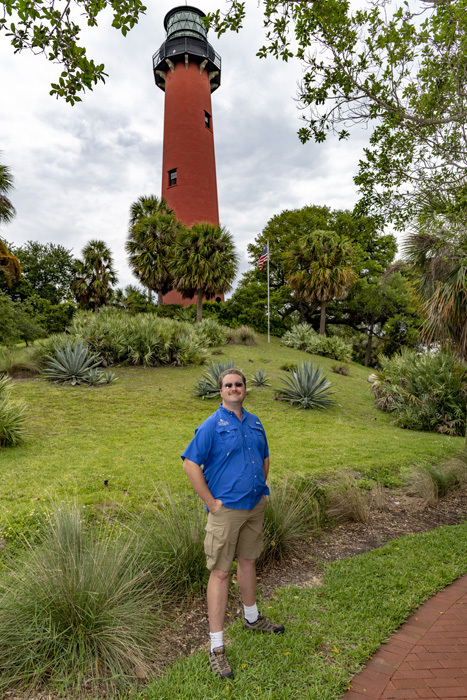William J. Newman’s design for Cape Hatteras Lighthouse served as the template for most postbellum brick lighthouses. For that it seems we have Paul J. Pelz to thank. Pelz had an impressive engineering career, including the Library of Congress. (See my 2017 article in Keeper’s Log Vol. 33 No. 4 for more about his life and career). Pelz worked as a draftsman for the Lighthouse Board in the 1860s and held the position of Chief Draftsman from 1871 to 1877.

(Library of Congress)
The Pelz design makes only a few changes from Cape Hatteras. The landings are all stacked on the same side of the tower instead of alternating sides. The base is still octagonal, but not as elaborate. Most notably, attached to the front door of the tower is an auxiliary structure. On the right is an oil storage room and on the left is a work room, with the two divided by a hallway. Presumably Pelz created his design under orders from Orlando M. Poe, Lighthouse Board Engineer Secretary.
Five major lighthouses on the Atlantic and Gulf Coasts used this design: Currituck and Bodie Island, NC; Morris Island (Old Charleston), SC; St. Augustine, FL; and Sand Island, AL. Three of those (Bodie, Morris, and Sand) were replacements for lighthouses destroyed in the Civil War. A shorter version of the Pelz design was used on the Pacific Coast: Point Arena, Pigeon Point, and Piedras Blancas, CA and Yaquina Head, OR. One design used for nine major lighthouses in seven years (1869-1876) would be an feat by itself, but the legacy of Pelz (and Newman) doesn’t end there.

(Photo by Ralph Eshelman, USLHS Digital Archives)
The lantern design, including the fancy gallery deck brackets (or slight variants thereof), was also used on several other lighthouses of the era even though they did not use the Pelz design for the tower. This includes Bolivar Point, TX; Mobile Point, AL; and Stannard Rock, MI.
The Hunting Island Lighthouse is a iron conical tower rather than brick, but is otherwise of a very similar design. It lacks the attached storage building, octagonal base, and the landings and windows are placed asymmetrically. The odd placement of the landings might have been intended to help serve as additional support for the tower. George H. Elliot, Poe’s successor as Engineer Secretary, approved the design for Hunting Island, which still stands today.
The Pelz design also seems to have been influential on some other lighthouses that he was not directly involved with. After a hurricane damaged the Dry Tortugas (Loggerhead Key) Lighthouse in Florida, 7th District Engineer Jared A. Smith submitted a design for a replacement in 1876. This was an octagonal iron tower with a reinforced base and no attached storage building. It also used a bell-shaped lantern design like the Fowey Rocks Lighthouse. The landings were also smaller and the windows symmetrically placed on four sides of the tower rather than only two. When Loggerhead Key made it through another hurricane without any major problems plans for a replacement lighthouse were scrapped.
Smith’s work did not go waste. Someone – most likely Orville E. Babock, 5th District Engineer – dusted them off just a couple years later. After a few small changes, including using a more traditional lantern, the resulting deign was used for the New Cape Henry Lighthouse in Virginia.

(USLHS Digital Archives)
Thanks to National Archives research by Ponce Inlet Lighthouse, we know that Orville Babcock explicitly stated the starting point of his design for that lighthouse was the Pelz design. Babcock’s changes were ultimately fairly extensive. The introduction of kerosene had decisively ended the longstanding debate about whether lighthouses should have an attached oil house. (The Lighthouse Service mandated the highly flammable fuel be stored in a free-standing structure.) Babock also altered the stairs and gallery brackets and used a bell-shaped lantern like that of Fowey Rocks Lighthouse.
The last known use of the Pelz design or a direct variant was for the Destruction Island Lighthouse in Washington state. Apparently the work of Engineer Secretary James F. Gregory, the brick and iron tower looks like a shorter version of the the Hunting Island Lighthouse of 15 years prior.
Ponce Inlet Lighthouse marked the beginning of the end for brick lighthouse design as skeletal iron towers became the new norm.

Josh Liller is the Historian and Collections Manager for Jupiter Inlet Lighthouse & Museum. He also serves as a Historian for the Florida Lighthouse Association. He is co-author of the revised edition of Five Thousand Years On The Loxahatchee: A Pictorial History of Jupiter-Tequesta, Florida (2019) and editor of the second edition of The Florida Lighthouse Trail (2020).

